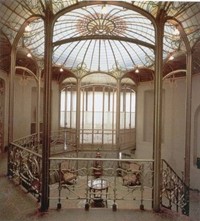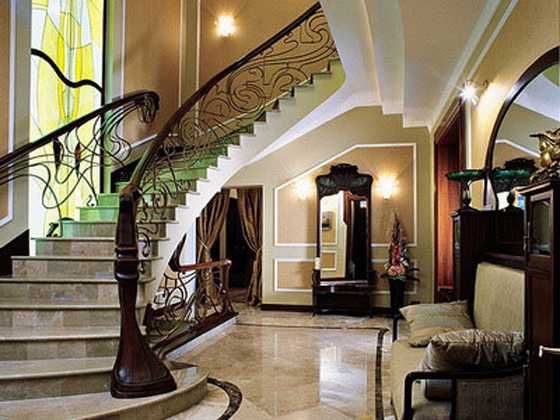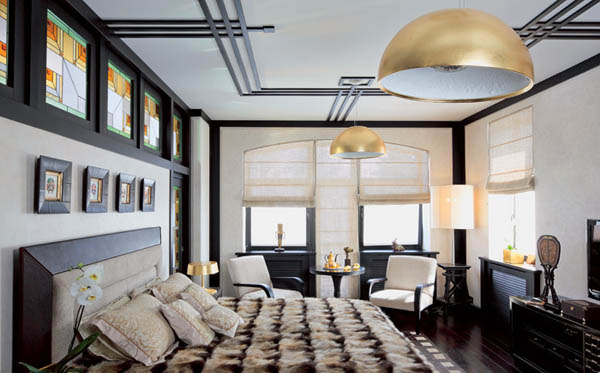By: Katie Kaywood
Have you ever wondered what it would have been like to live in the late 1800s to the early 1900s?Art Nouveau was highly used in this time era. Art Nouveau is a style of decorative architecture prominent in western europe in a period of peace and prosperity. It lasted from the late 1800's until World War I and was known for its intricate linear designs and flowing curves based on natural forms. This design technique rejected traditional models, it had its own sense of style and form. Art Nouveau is also known as "New Art," its designers endeavored to achieve the combination of art and craft, and further the creation of the spiritually uplifting Gesamtkunstwerk, "total work of art" relating a variety of media. The unification of the fine applied arts was successfully achieved by Victor Horta and Henry Van de Velde's Hotel Tassel and Van Eetvelde House.
Artists and designers shared an admiration for japanese art, they were inspired by painters such as; Van Gogh, Edvard Munch, Gauguin, Aubrey Beardsley. Its curvature and style is unlike any artists work before, very intricate, beautiful, and naturalistic design.
Art Nouvea was considered a "total style", which means that it includes a hierarchy of scales in design: architecture, interior design, decorative arts, including furniture, textiles jewelry, household silver, as well as the range of visual arts. Art Nouvea is very in-tune with its surrounding, using natural curves you see in the nature and environment around us. This modern style was considered an attempt to create an international style based on decorations. Art Nouveau was a style that developed an energetic generation of designers and artists who sought to achieve an art form appropriate to the modern age. This style was also known as a response to the industrial revolution. Belgium and France were the leaders of the movement, Germany, Spain and the Scandinavian countries were also affected and arose awareness in the Western countries.
Here are a few examples of art and furniture:
*Used a lot of wood, glass and metal
Current Applications:
Some thing I learned while reading Justine's blog was that this style of design is still prevalent today. In her current photos as well as mine I was impressed to see many similarities to the 1800s-1900s to now, many design aesthetics are still today used and give the same look. She also went into detail about the designers and about how they used great inspiration from their surroundings using natural curves and nature around them.
For more information refer to this video :)
https://www.youtube.com/watch?v=O34YVQsFiWY










No comments:
Post a Comment